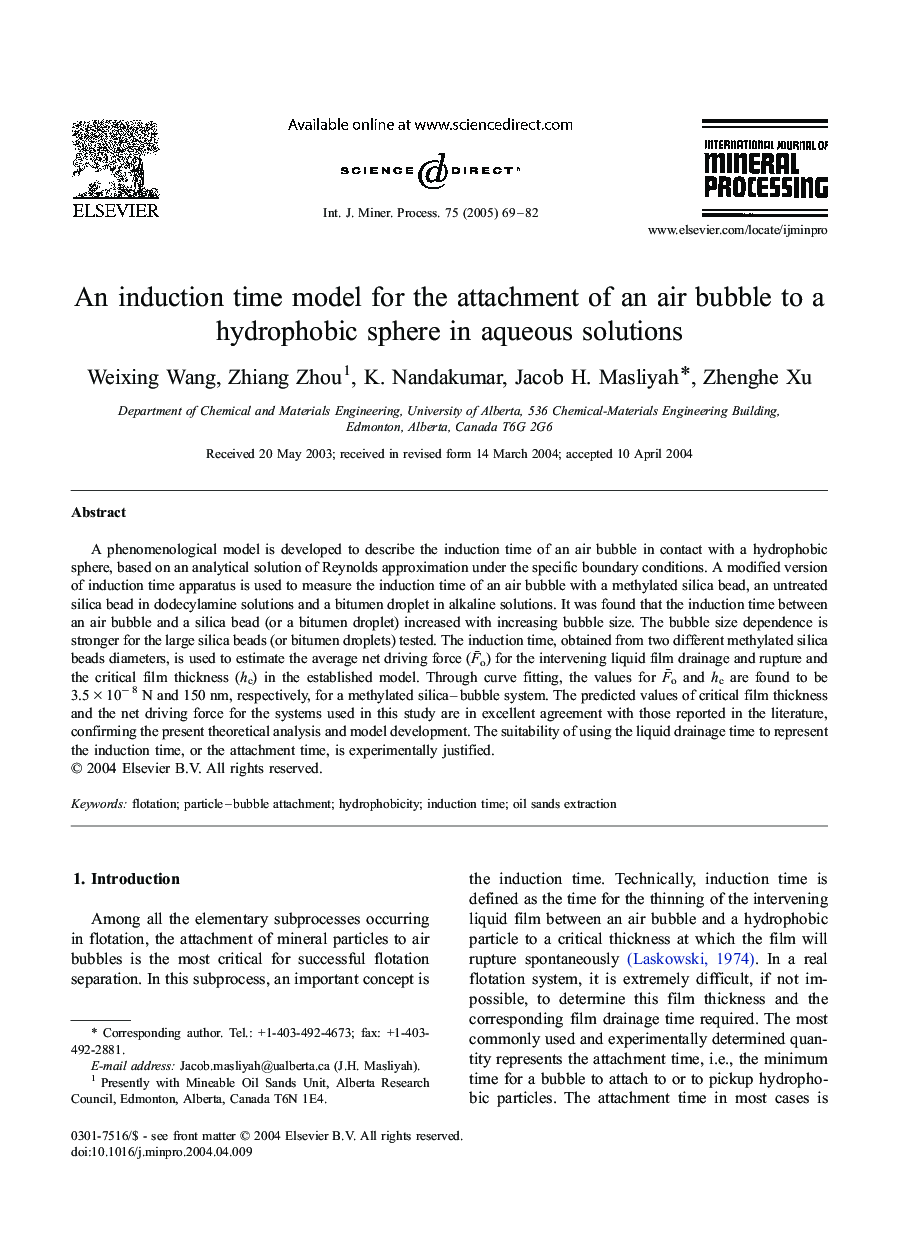| Article ID | Journal | Published Year | Pages | File Type |
|---|---|---|---|---|
| 9633079 | International Journal of Mineral Processing | 2005 | 14 Pages |
Abstract
A phenomenological model is developed to describe the induction time of an air bubble in contact with a hydrophobic sphere, based on an analytical solution of Reynolds approximation under the specific boundary conditions. A modified version of induction time apparatus is used to measure the induction time of an air bubble with a methylated silica bead, an untreated silica bead in dodecylamine solutions and a bitumen droplet in alkaline solutions. It was found that the induction time between an air bubble and a silica bead (or a bitumen droplet) increased with increasing bubble size. The bubble size dependence is stronger for the large silica beads (or bitumen droplets) tested. The induction time, obtained from two different methylated silica beads diameters, is used to estimate the average net driving force (FÌo) for the intervening liquid film drainage and rupture and the critical film thickness (hc) in the established model. Through curve fitting, the values for FÌo and hc are found to be 3.5Ã10â8 N and 150 nm, respectively, for a methylated silica-bubble system. The predicted values of critical film thickness and the net driving force for the systems used in this study are in excellent agreement with those reported in the literature, confirming the present theoretical analysis and model development. The suitability of using the liquid drainage time to represent the induction time, or the attachment time, is experimentally justified.
Related Topics
Physical Sciences and Engineering
Chemical Engineering
Chemical Engineering (General)
Authors
Weixing Wang, Zhiang Zhou, K. Nandakumar, Jacob H. Masliyah, Zhenghe Xu,
